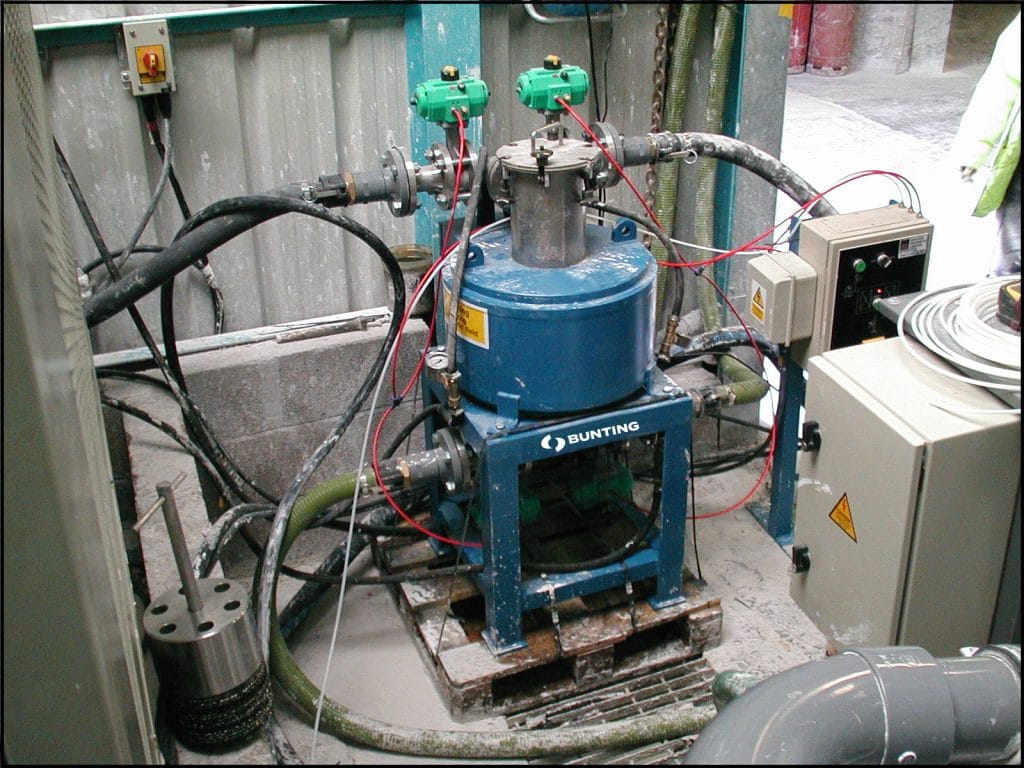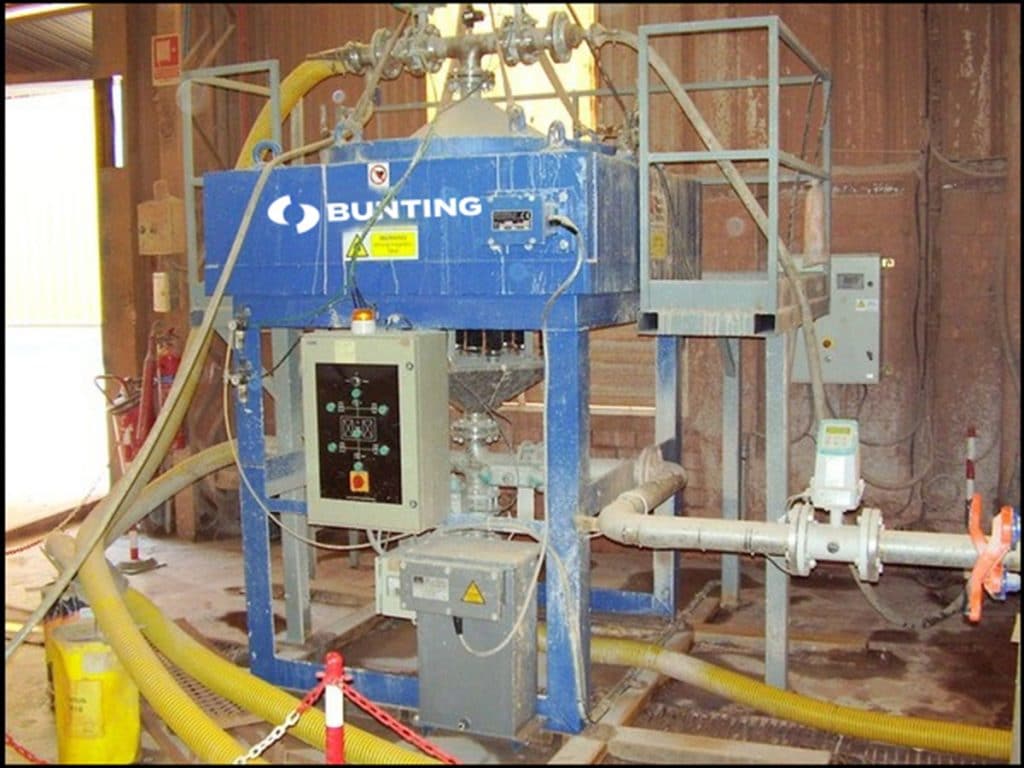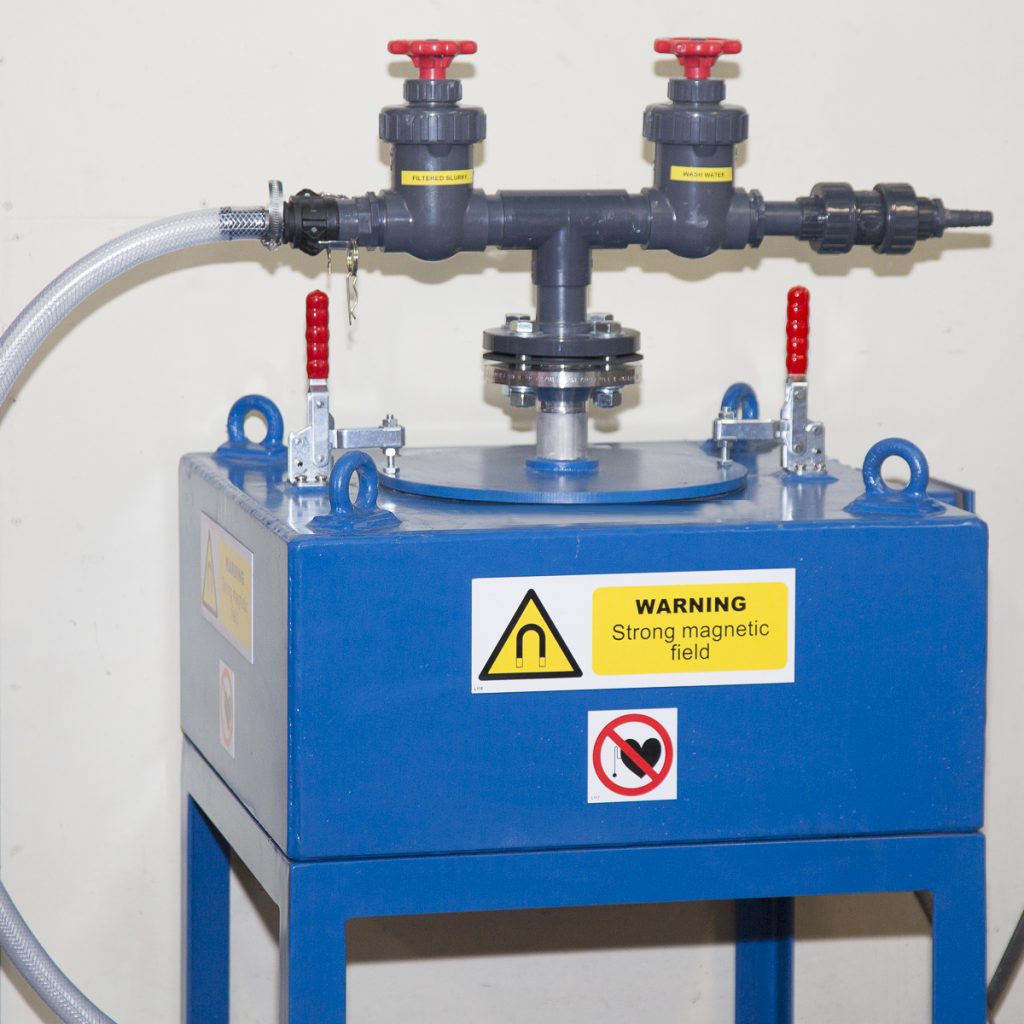Electromagnetic Filters for Ceramics
By Paul Fears | 23 March 2021
Since the first ceramics were produced, iron and iron-bearing minerals have caused defects. The problematic minerals occur naturally in the raw materials, with additional fine iron accidentally introduced during transportation, storage or processing.
Effective removal often involves several stages of magnetic separation. However, the introduction of High-Intensity Electromagnetic Filters proved ground-breaking in terms of removing even the finest and weakest magnetic particles.
Traditional Magnetic Separators
Small electromagnetic bowl filters have been commonplace in ceramics plants for decades. The small bowl-type electromagnets, often producing a background magnetic field of around 1500 gauss, were an industry-standard, removing coarser magnetic particles from ceramic slips and glazes.

In the late 1980s, the introduction of permanent Rare Earth Magnets dramatically improved the separation of magnetic particles. Rare Earth Tube Magnets, with a nominal surface magnetic strength of 9000 gauss, captured fine and weakly magnetic particles. However, they required manual and frequent cleaning, which often did not occur. As the magnetics built up on the surface of the Tube Magnets, so the separation efficiency reduced.
Higher Intensity Electromagnetic Filters
With a drive towards improved efficiencies to combat increasing competition from the Far East, European ceramics producers sought improved separation of problematic iron.

The High-Intensity Electromagnetic Filter provided the answer. The magnetic field is generated in a similar way to the old small electromagnetic bowl filters, but that was where the similarity ceased. The new magnetic separation technology generated background magnetic fields of between 5,000 and 6,500 gauss and this field intensity was further enhanced on the cross-points of a centrally-located magnetic stainless-steel matrix to between 10,000 and 12,000 gauss.
- Technical Product Information: Electromagnetic Filters
The increased magnetic intensity enabled the capture of the finest iron and also para-magnetic minerals. When the central matrix was cleaned, the flushed-out fine magnetics appeared almost oil-like.
The valve and pipework design of the Electromagnetic Filter also enabled automatic cleaning of the magnetics from the matrix. On a timed sequence, commonly every 20 minutes for glaze, the feed would stop, the electromagnetic coil would turn off, and water would flush through the matrix. After approximately 2 minutes, the cleansed Electromagnetic Filter would be back in operation.
Cleansing Ceramic Glaze and Body
Initially, the focus was on ceramic glaze, especially with the growing demand for high-white ceramic sanitaryware and tableware. The Electromagnetic Filter, complete with pipework, valves, and control, could be mounted on a wheeled frame and easily moved to an individual glaze storage tank. Once connected, the glaze would be continuously passed through the Electromagnetic Filter, ensuring the maximum possible removal of iron and weakly magnetic particles. Care had to be taken with some coloured glazes whose pigments were, indeed, magnetic.
Then ceramic producers started assessing the ceramic body. Iron contamination in the body of a fired ceramic weakens the structure, causing cracks and breaks. Also, iron in the body damaged moulds and caused defects in the surface finish of the biscuit and the smoothness of the glaze.

The processing volume of ceramic body was far higher than glaze and batch feeding was not possible in many plants. Subsequently, Bunting developed larger Electromagnetic Filters and set up a flip-flop operation where one was always working whilst the other was cleaning. This provided a continuous flow of ceramic body and automated cleaning. This technique was also used in many mineral processing plants purifying silica sand and feldspar.
- Technical article: Laboratory High-Intensity Electromagnetic Filter
Improving European Ceramic Competitiveness
Ceramic producers using Electromagnetic Filters found a dramatic decrease in rejects due to iron contamination as well as an improvement in the whiteness. Such a focus on improved processing and end-product quality was vital as Europe competed with a growing number of high-volume, lower-quality and low-priced imports from the Far East.
Related Technical Articles
- Keeping Ceramic Tableware Iron Blemish Free
- Keeping Ceramic Sanitaryware Iron Free
- Keeping Ceramic Tiles Iron Free
Optimum Magnetic Separation Reduces Rejects
Understanding the ceramic manufacturing process is important when making recommendations for the optimum magnetic separation equipment. However, each manufacturing process is unique and a visit by a local Bunting Sales Engineer will help understand a specific process and iron contamination issue and propose a specific solution.
For additional information on eradicating iron contamination in ceramic tableware, tiles, sanitaryware, or technical ceramics, please contact us on:
Email: Gordon Kerr at GKerr@buntingmagnetics.com
Telephone: +44 (0) 1527 65858
Follow us on social media
For further information or to discuss a specific project, please complete the following form